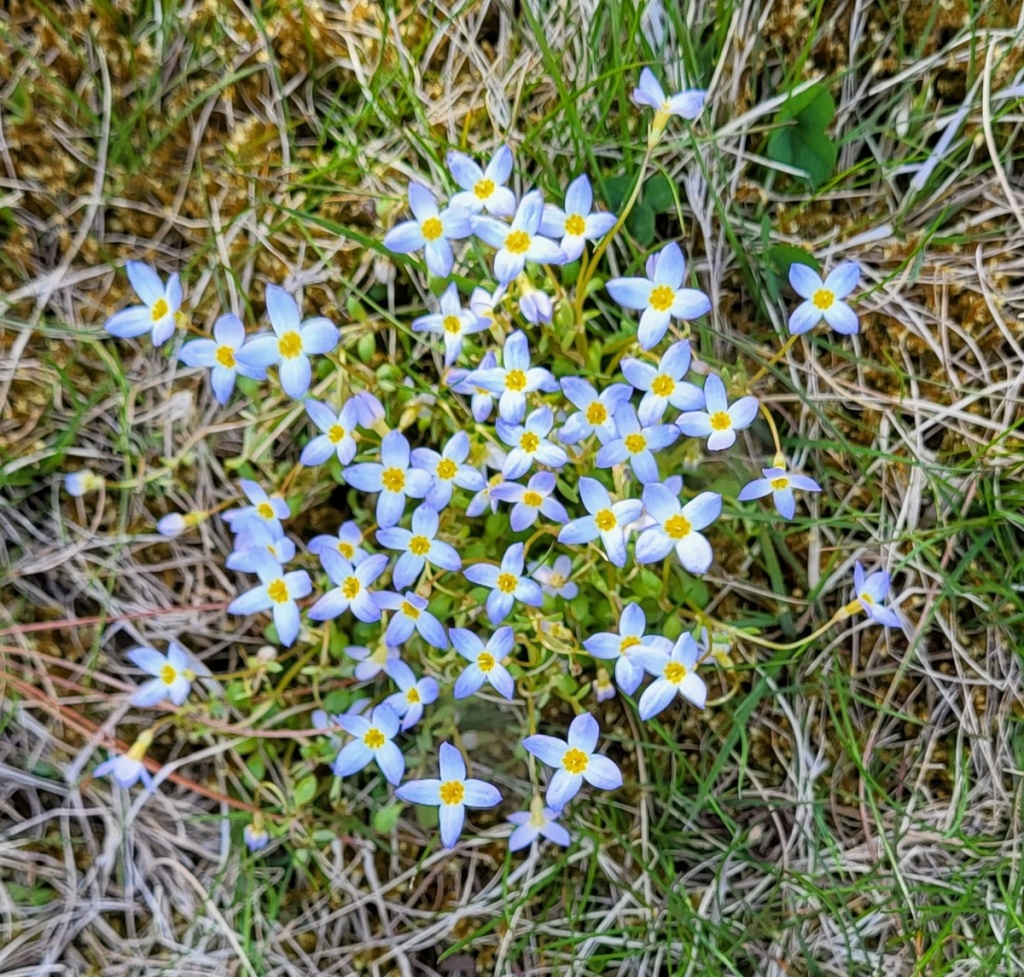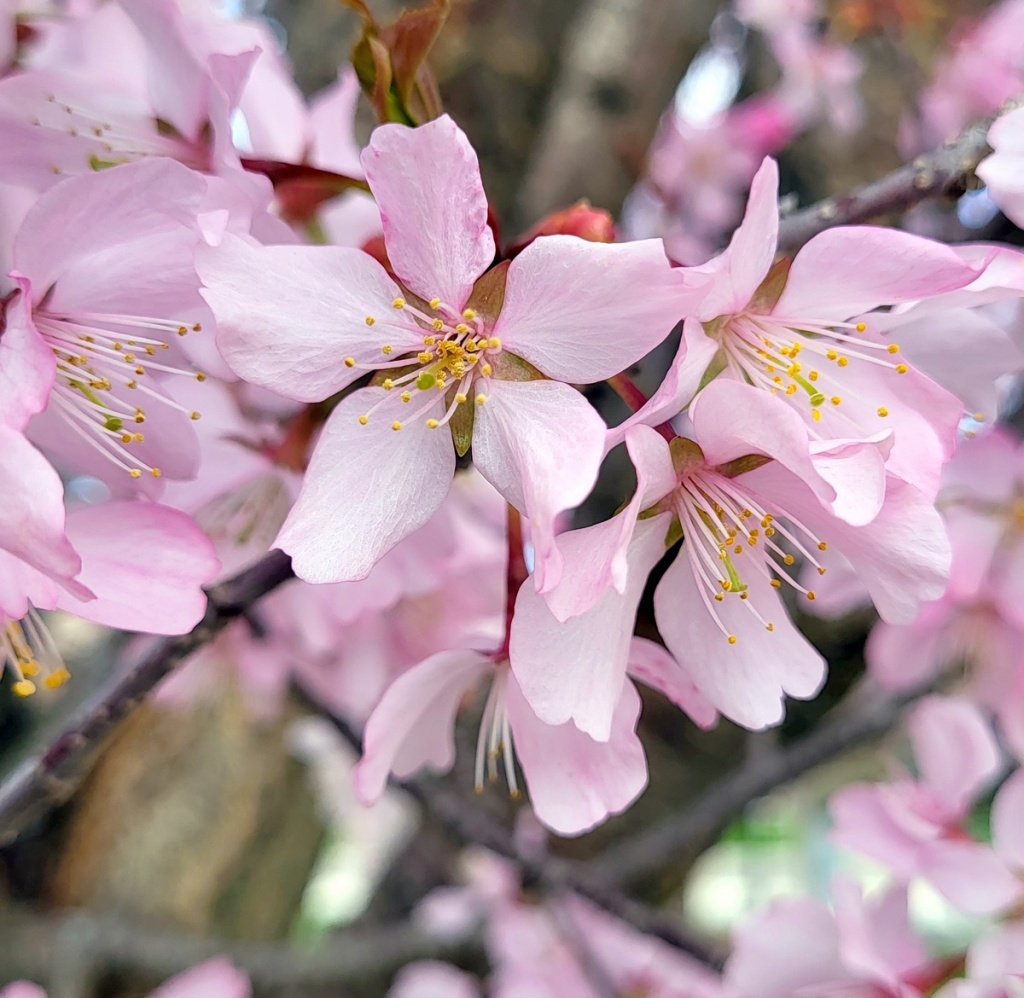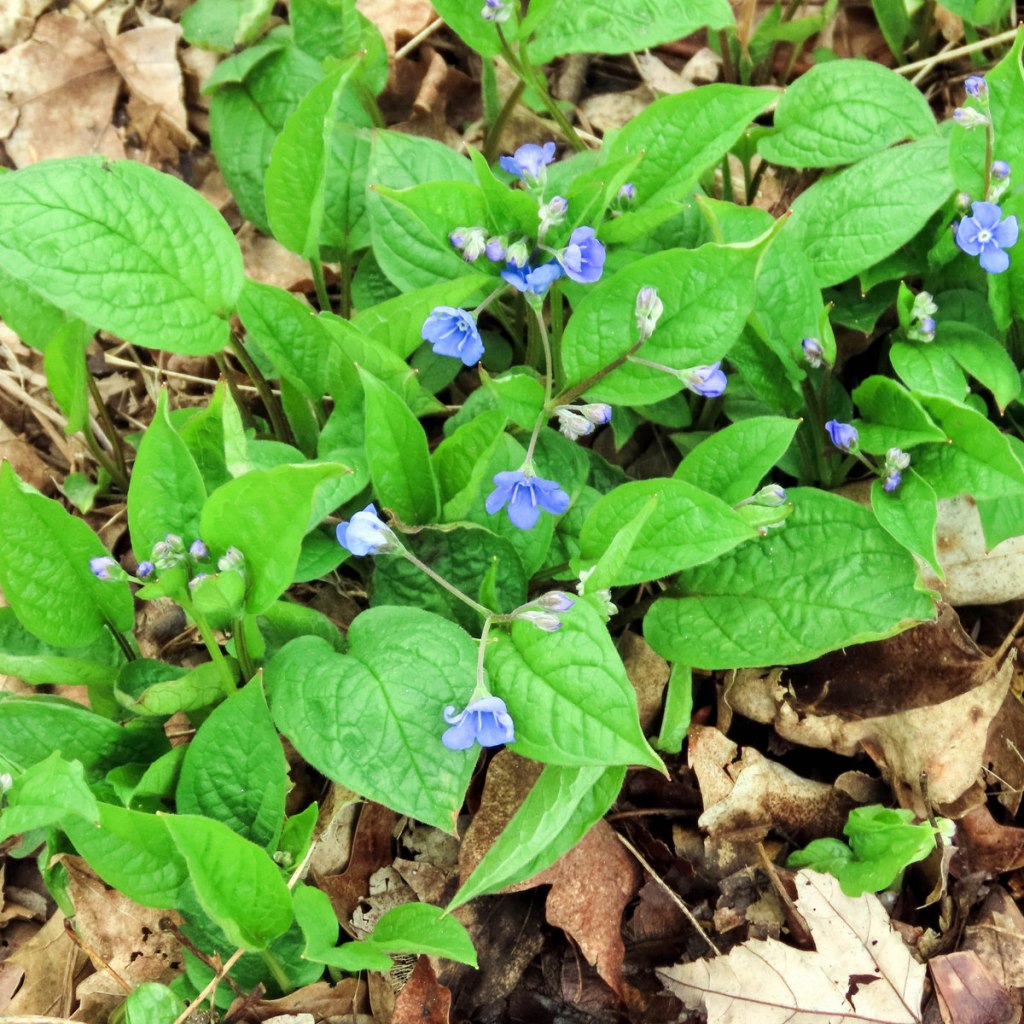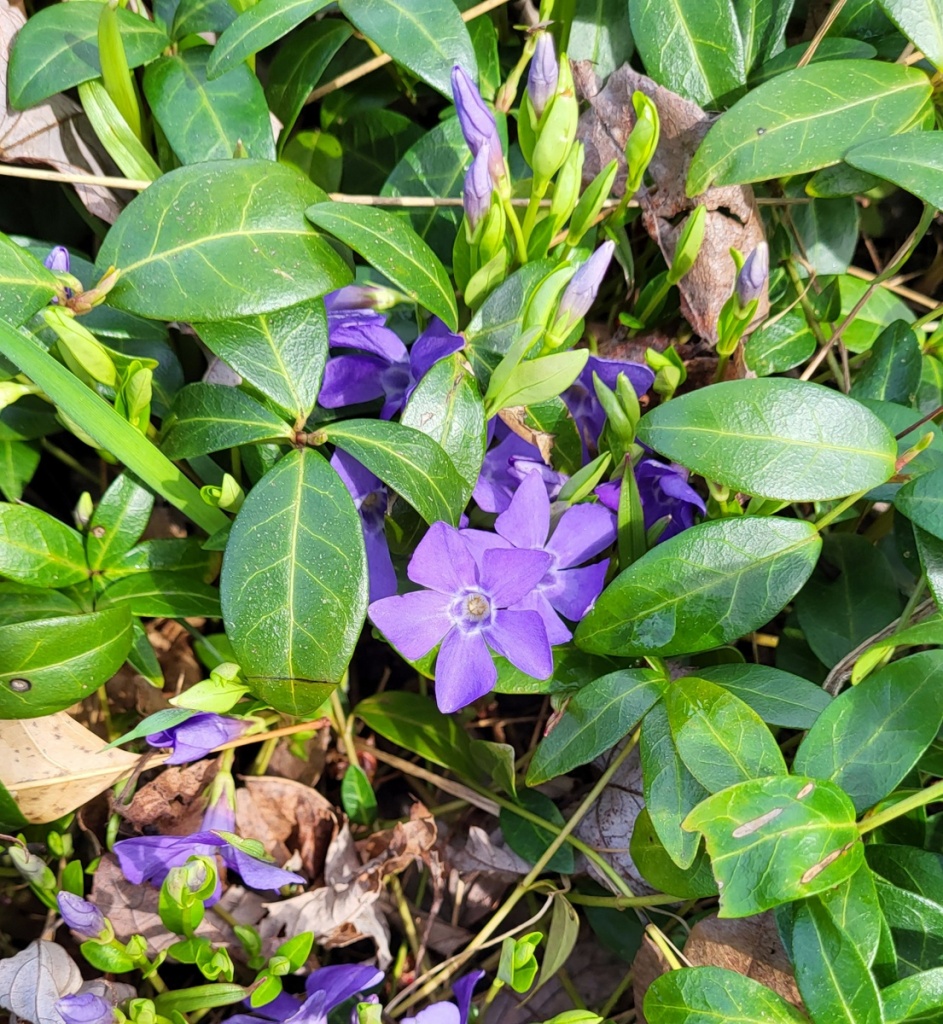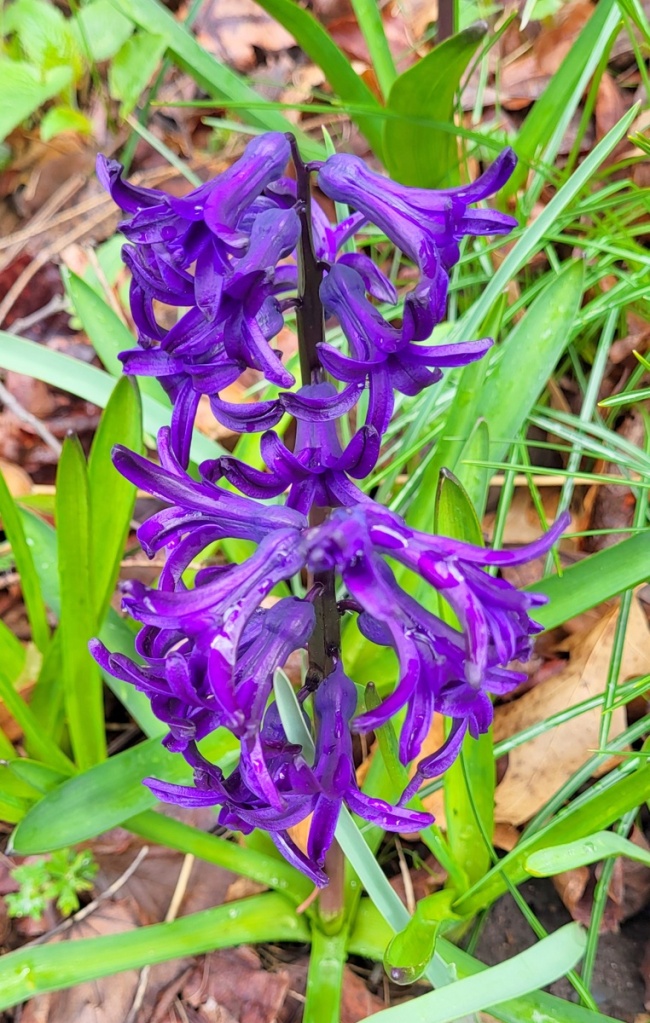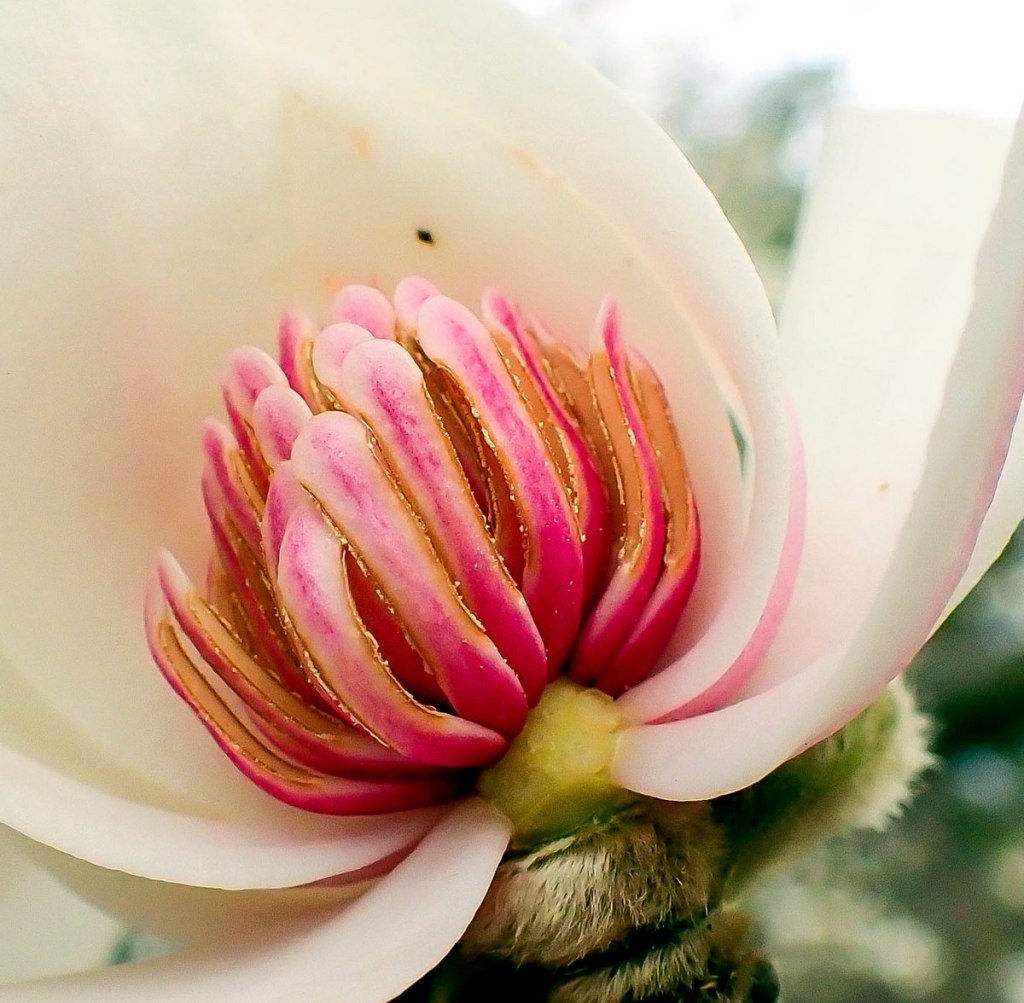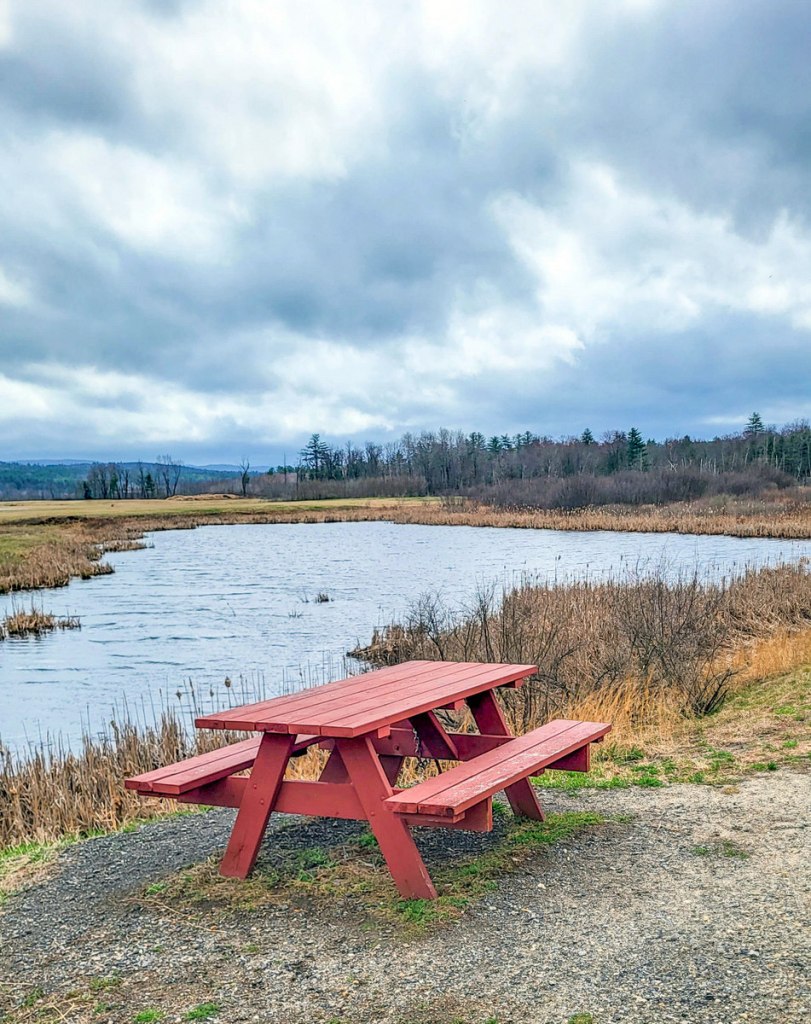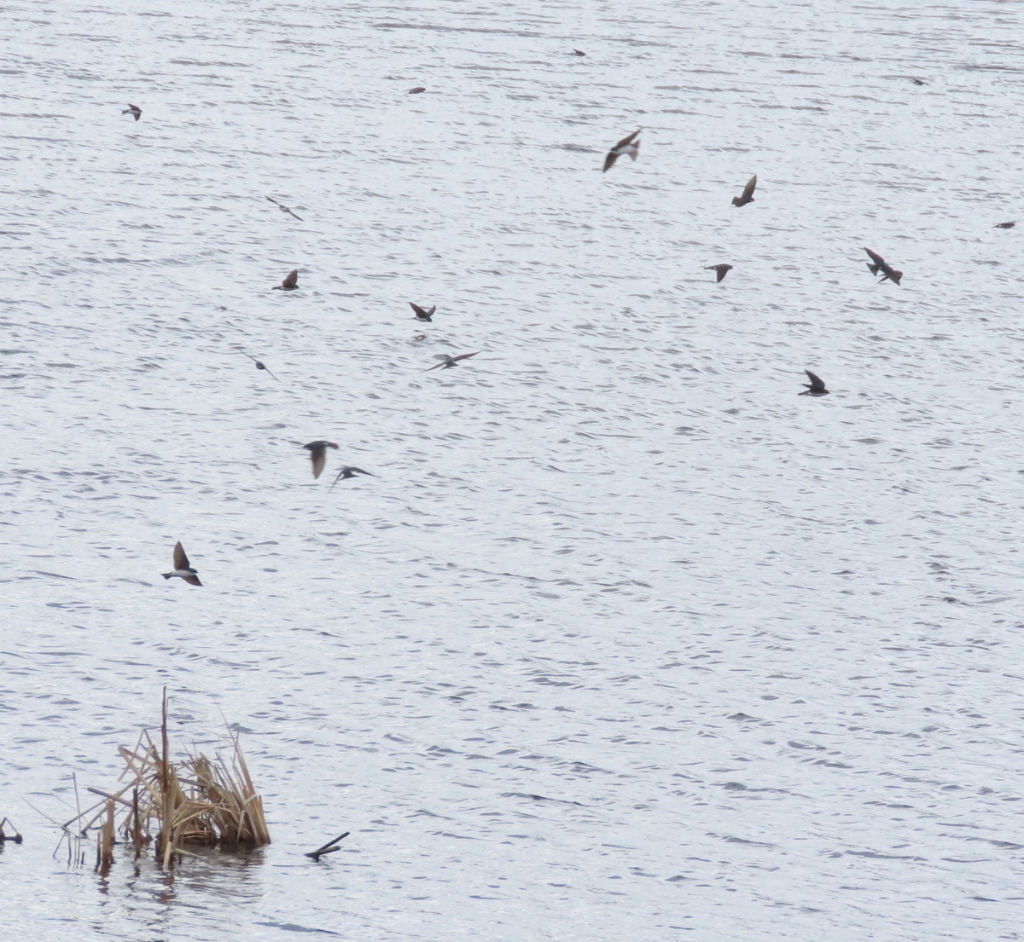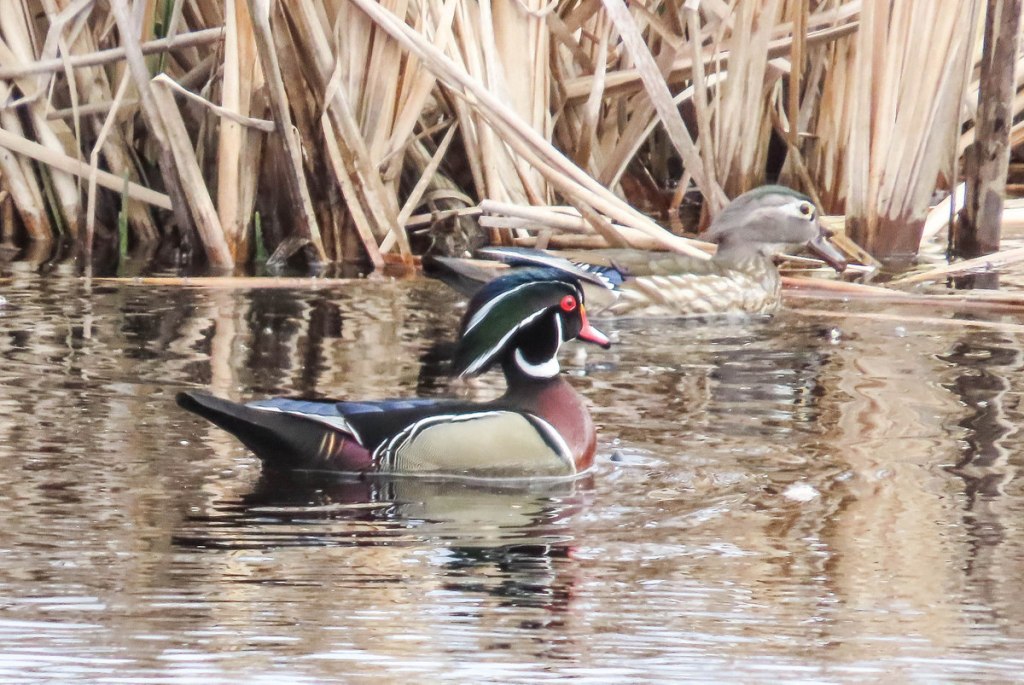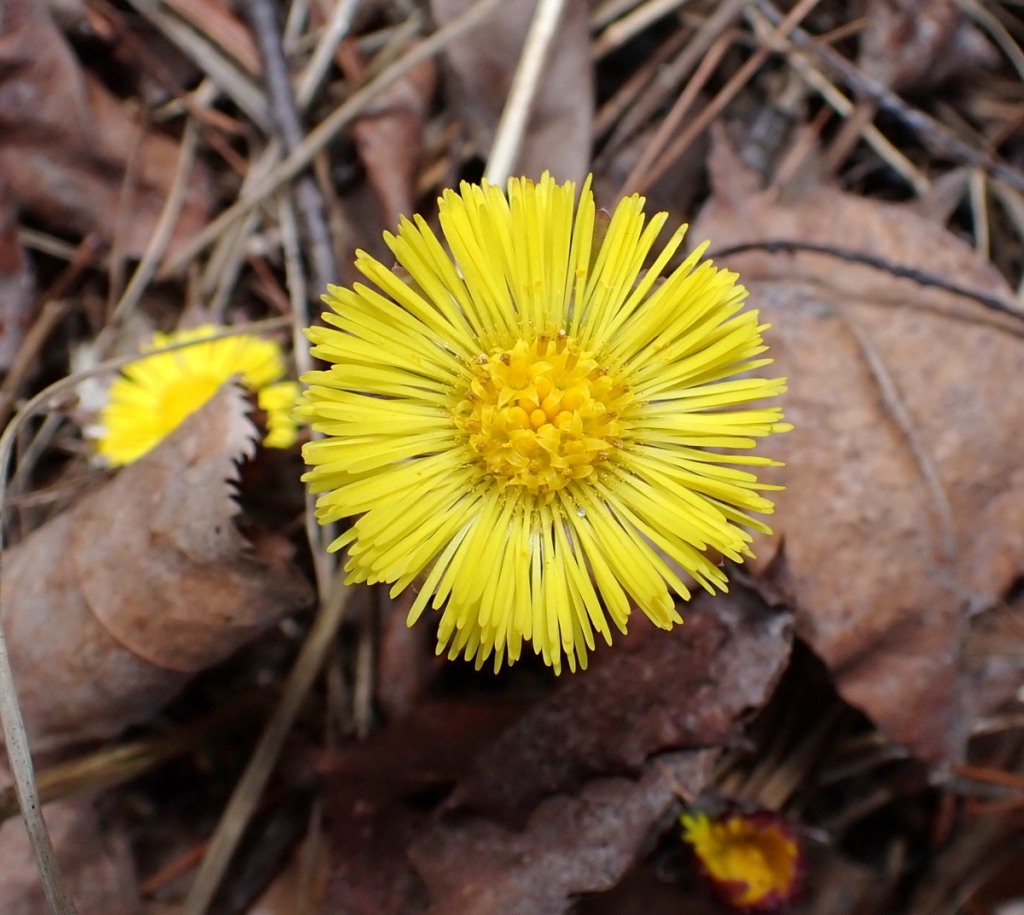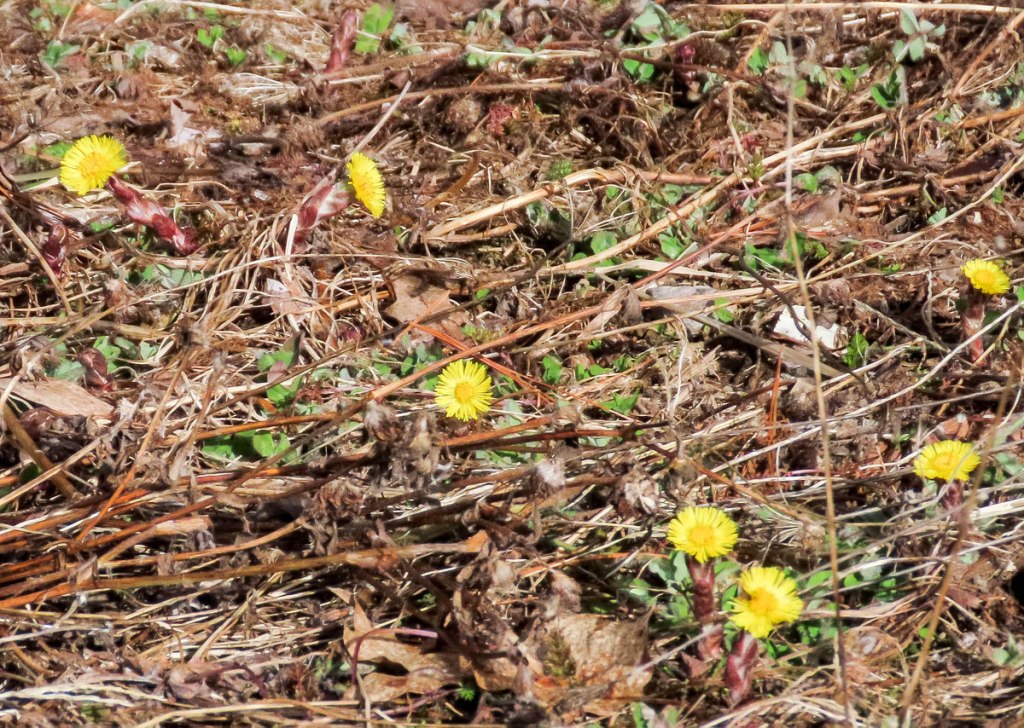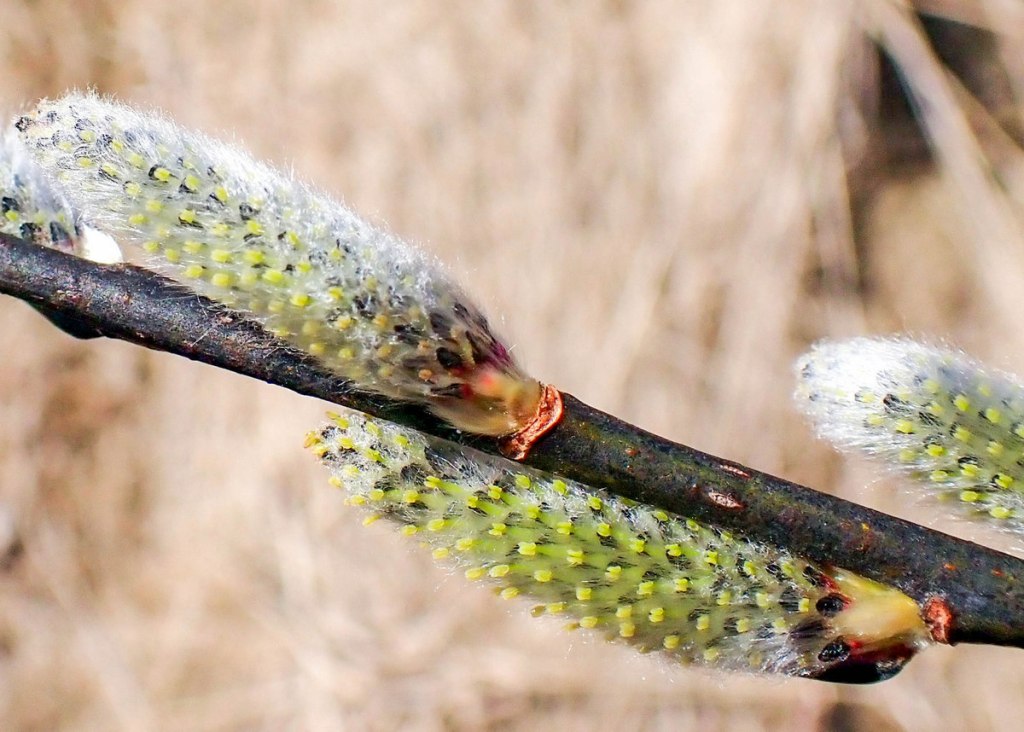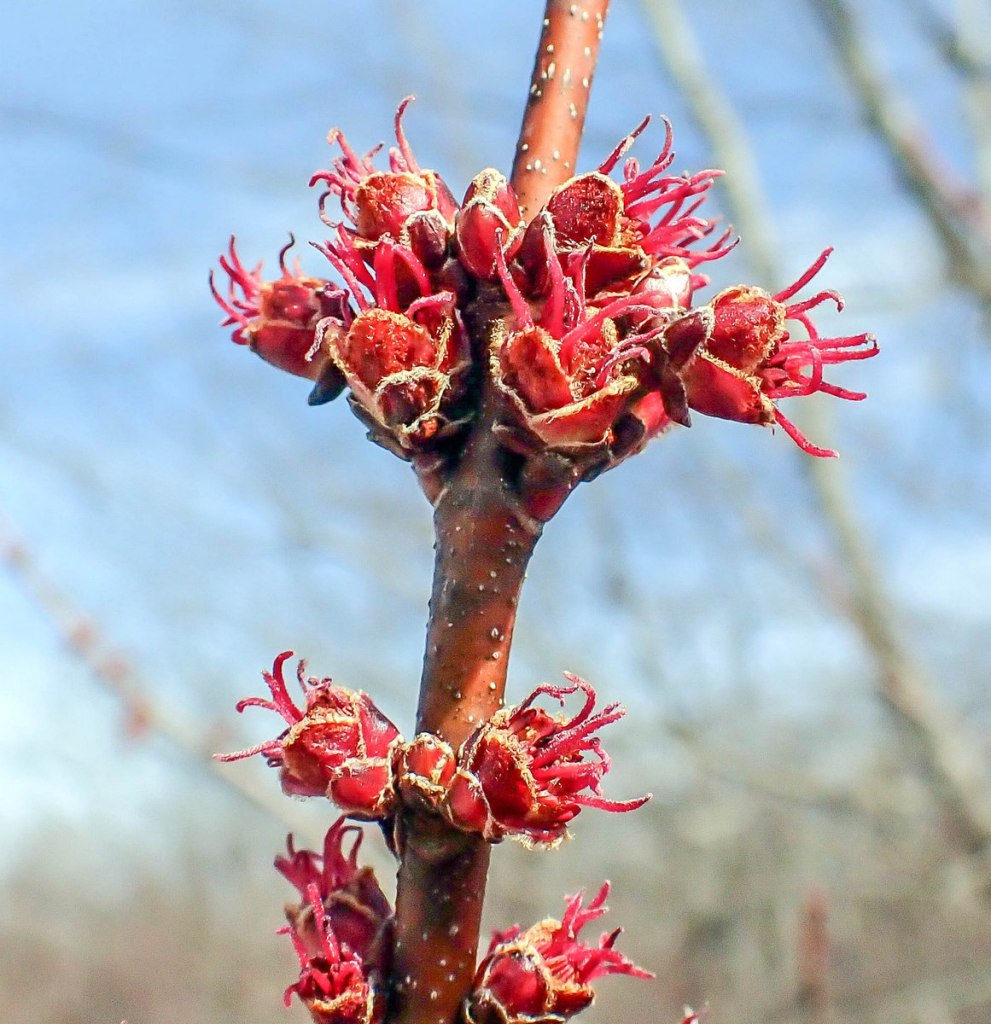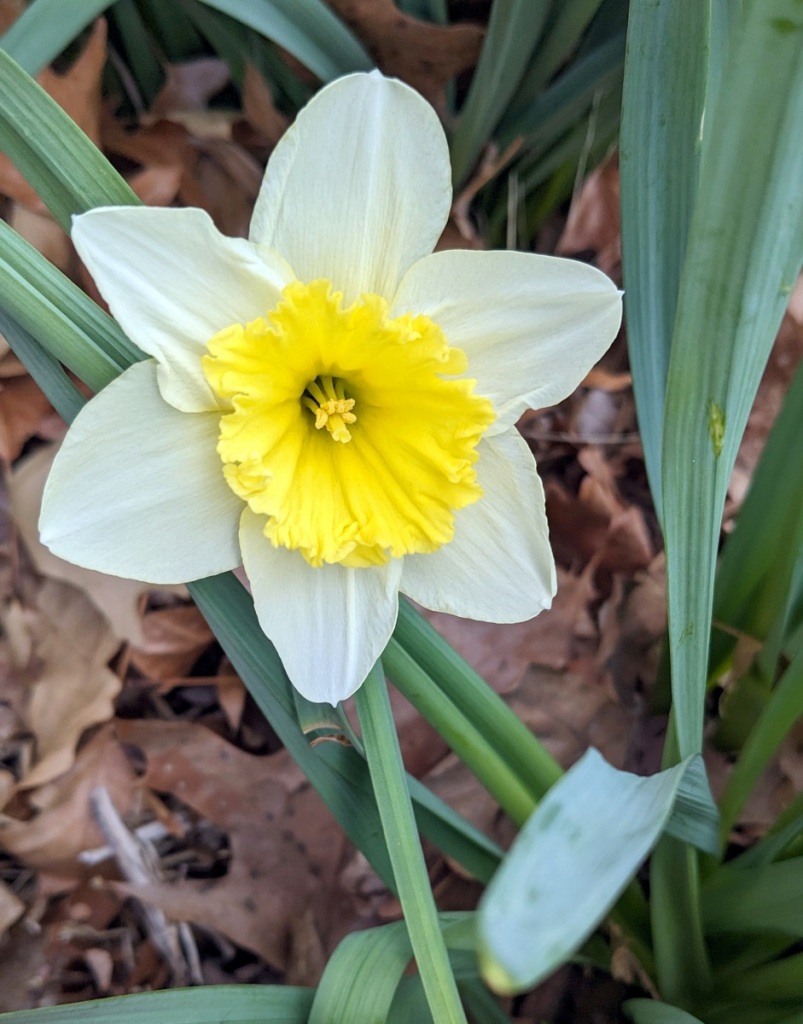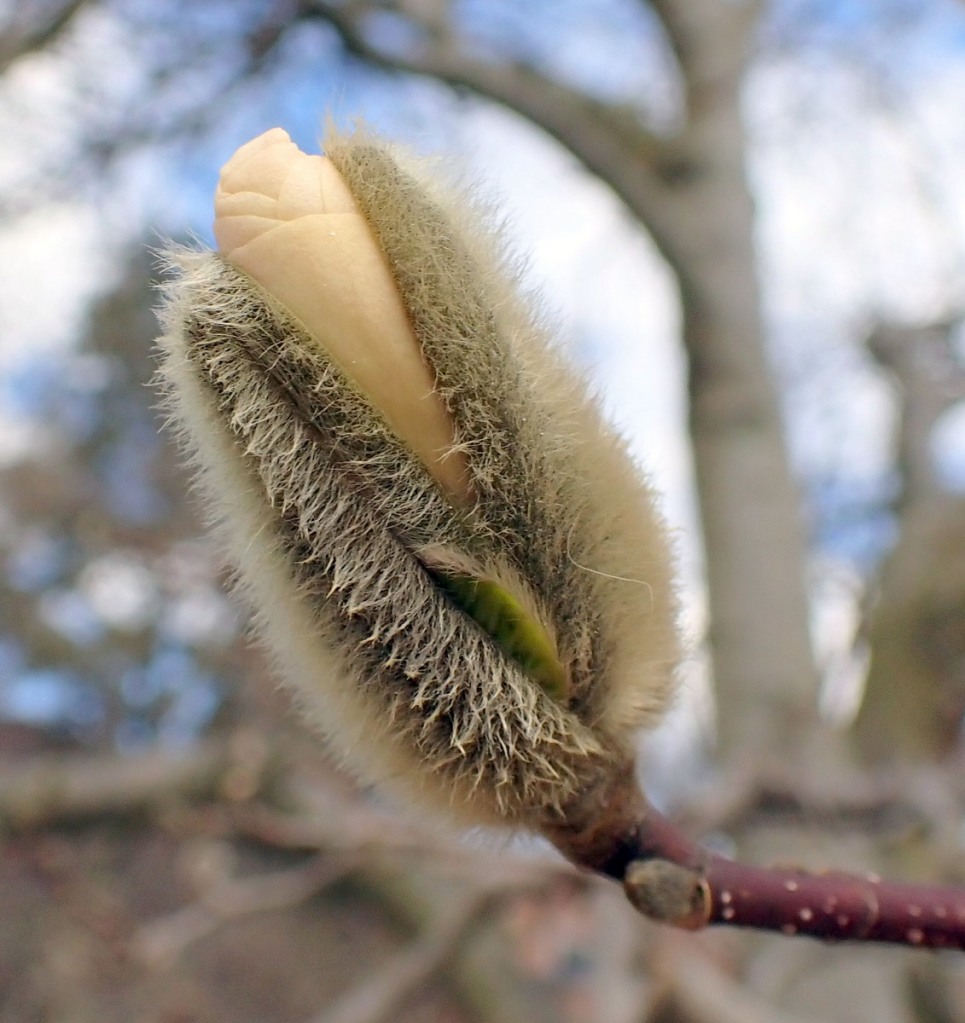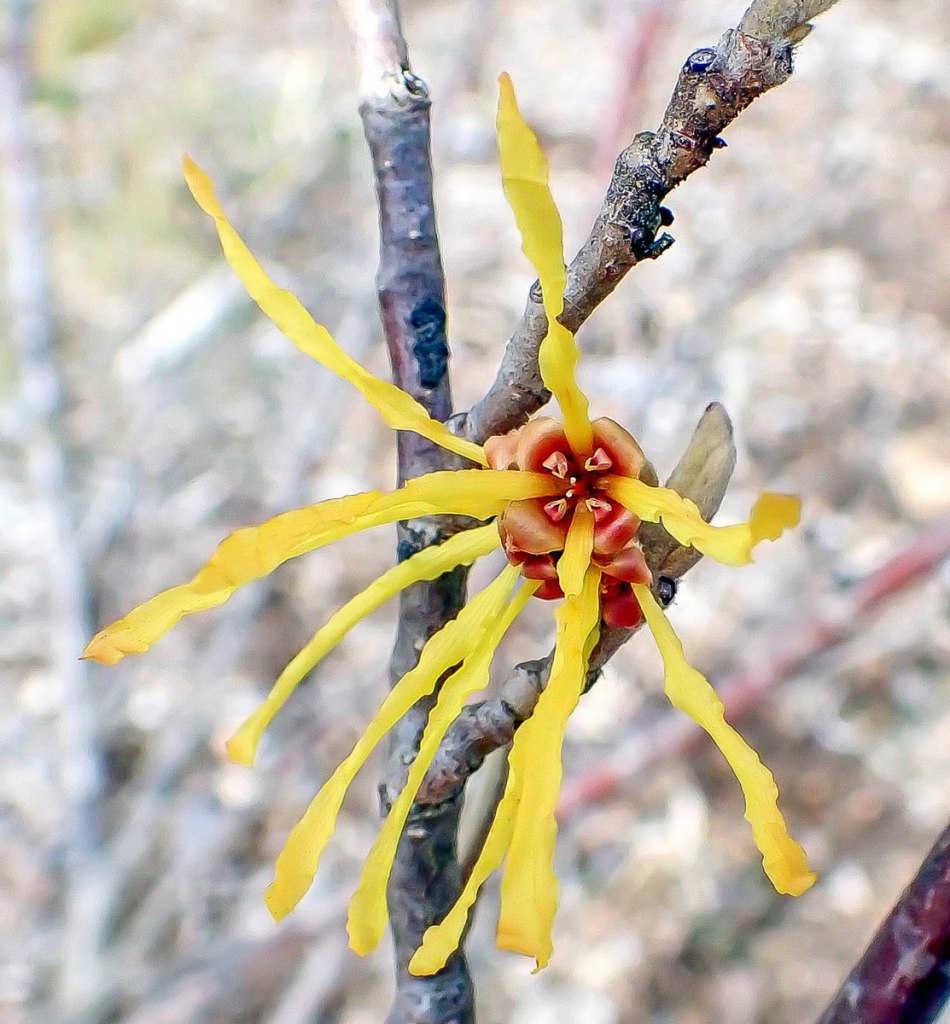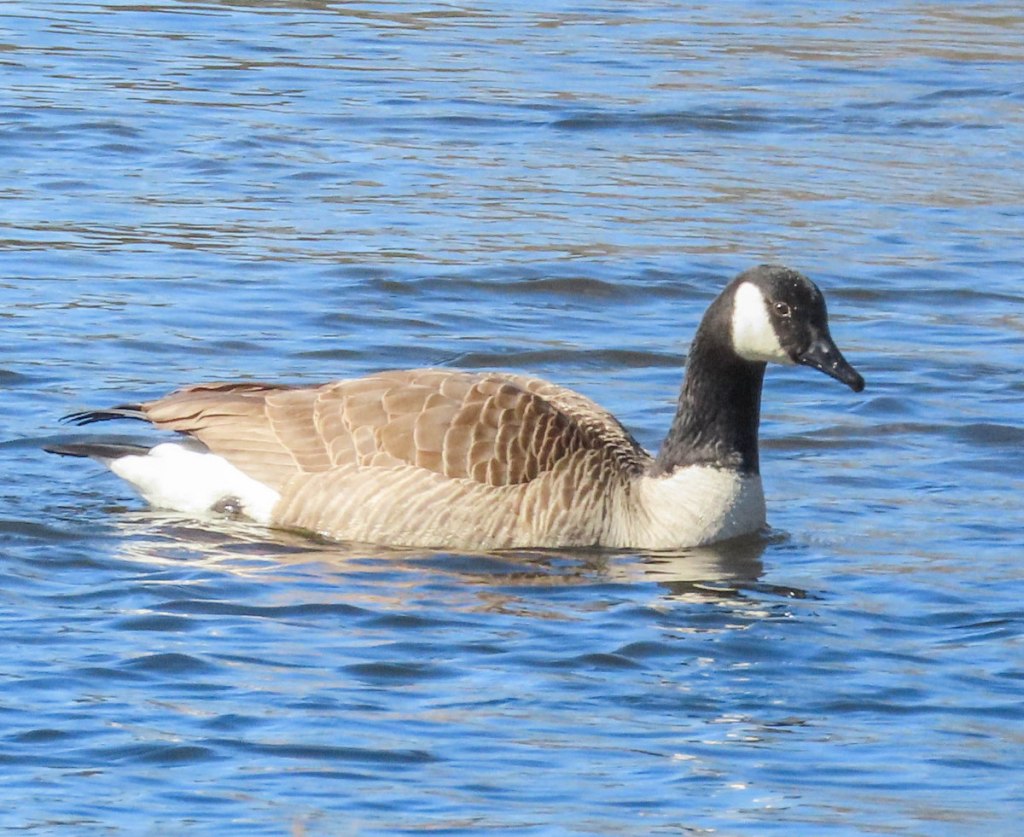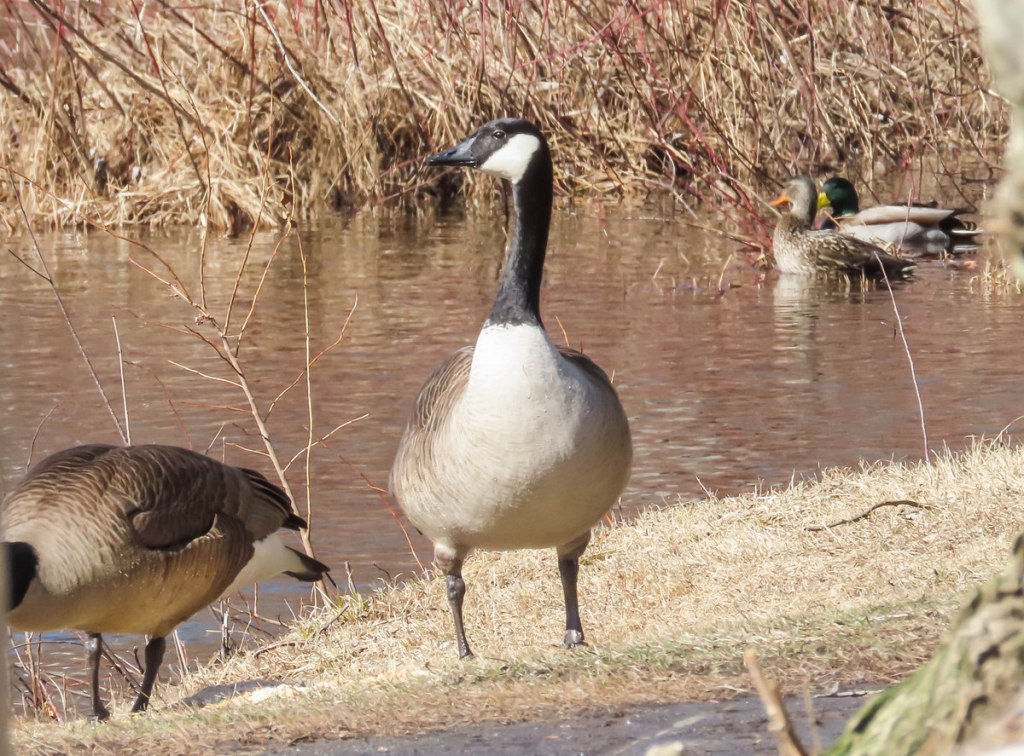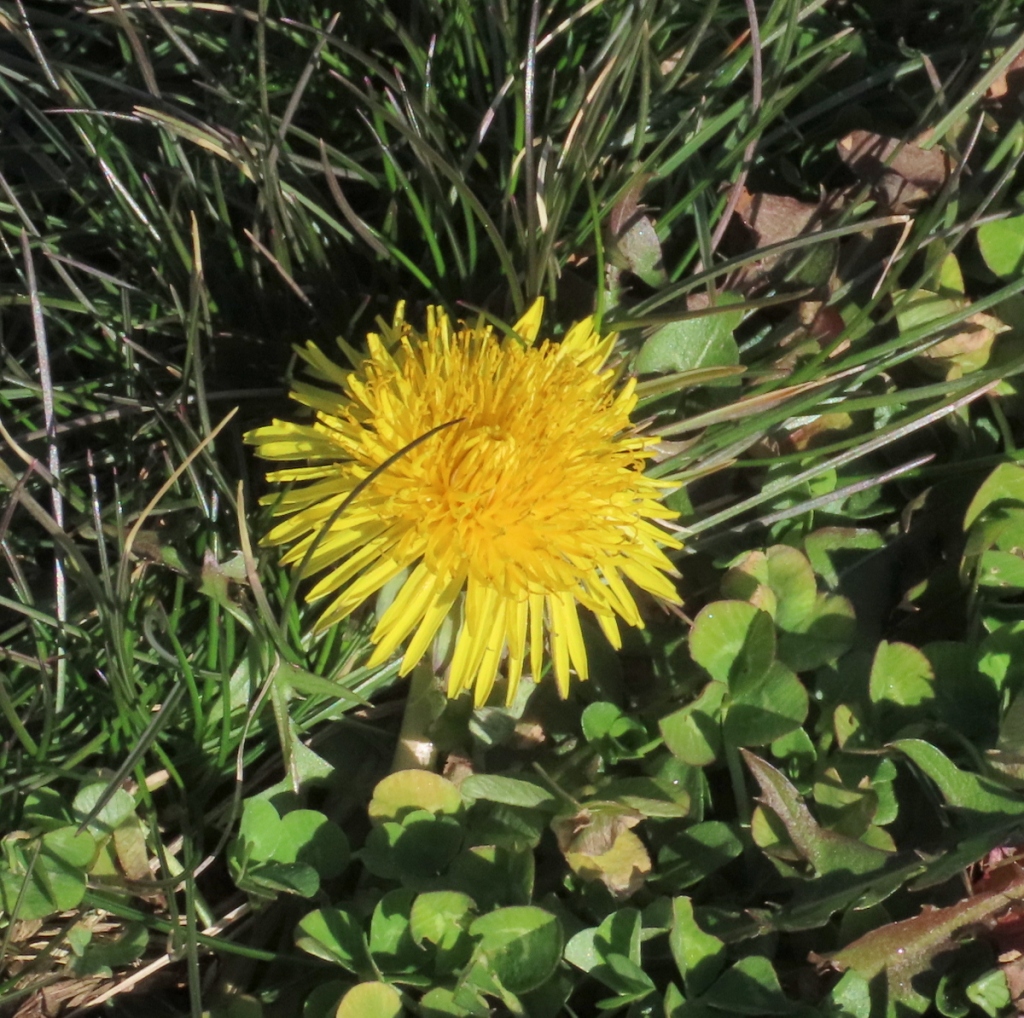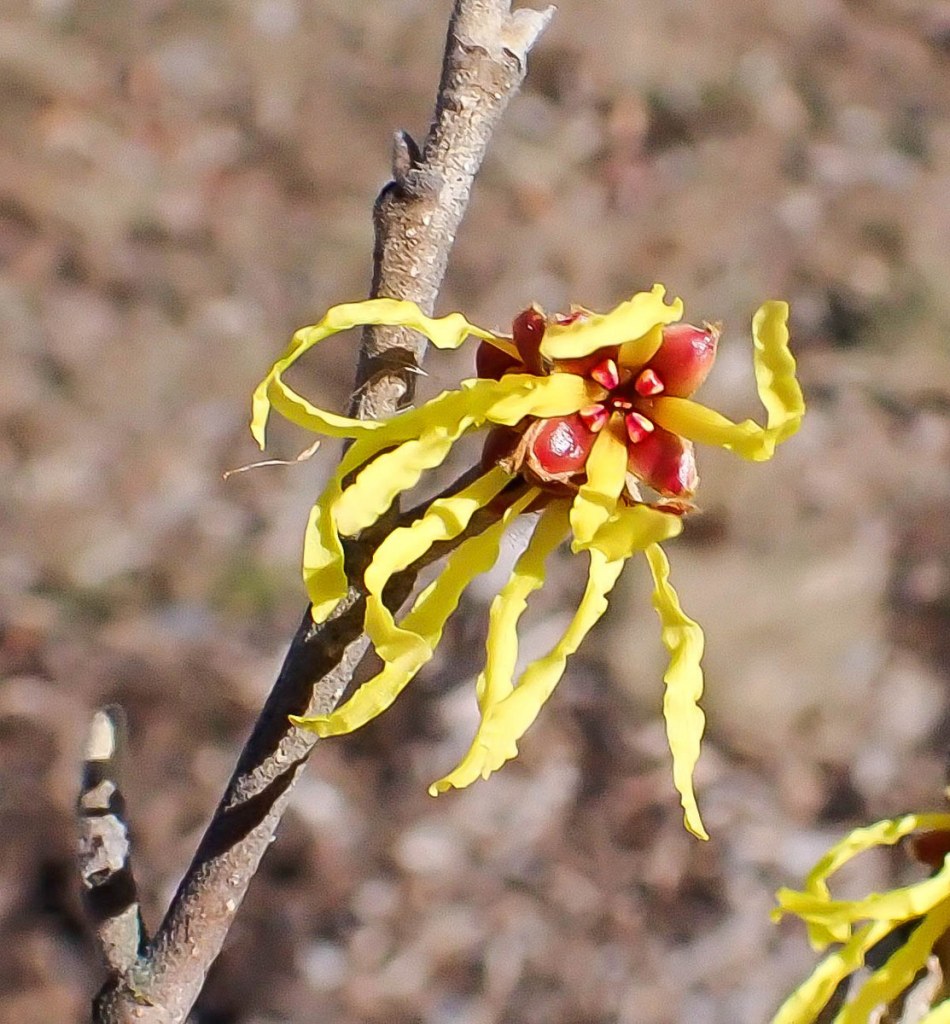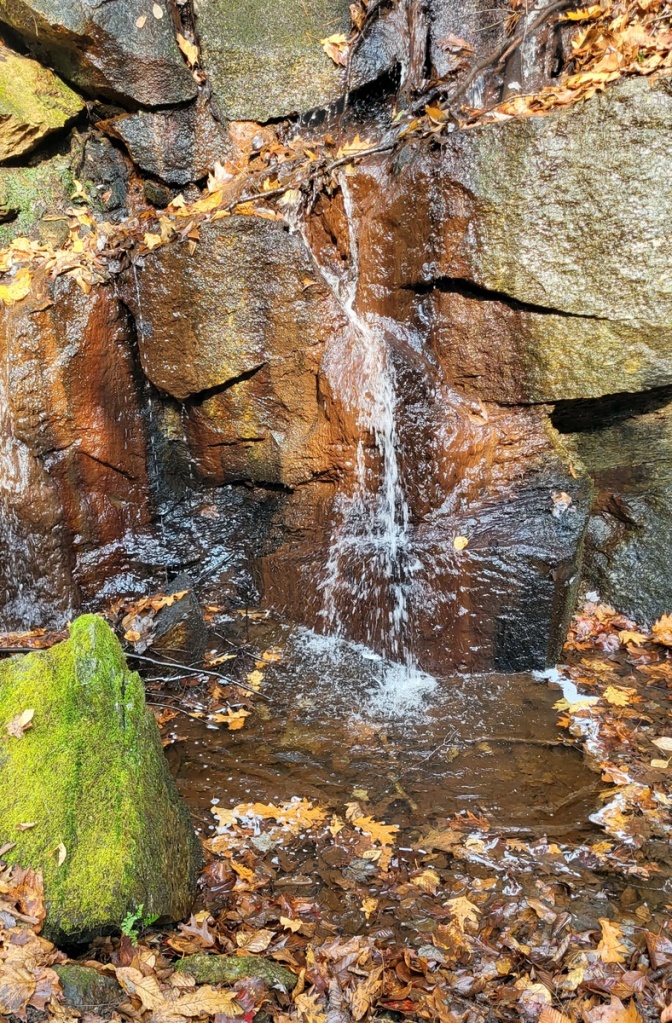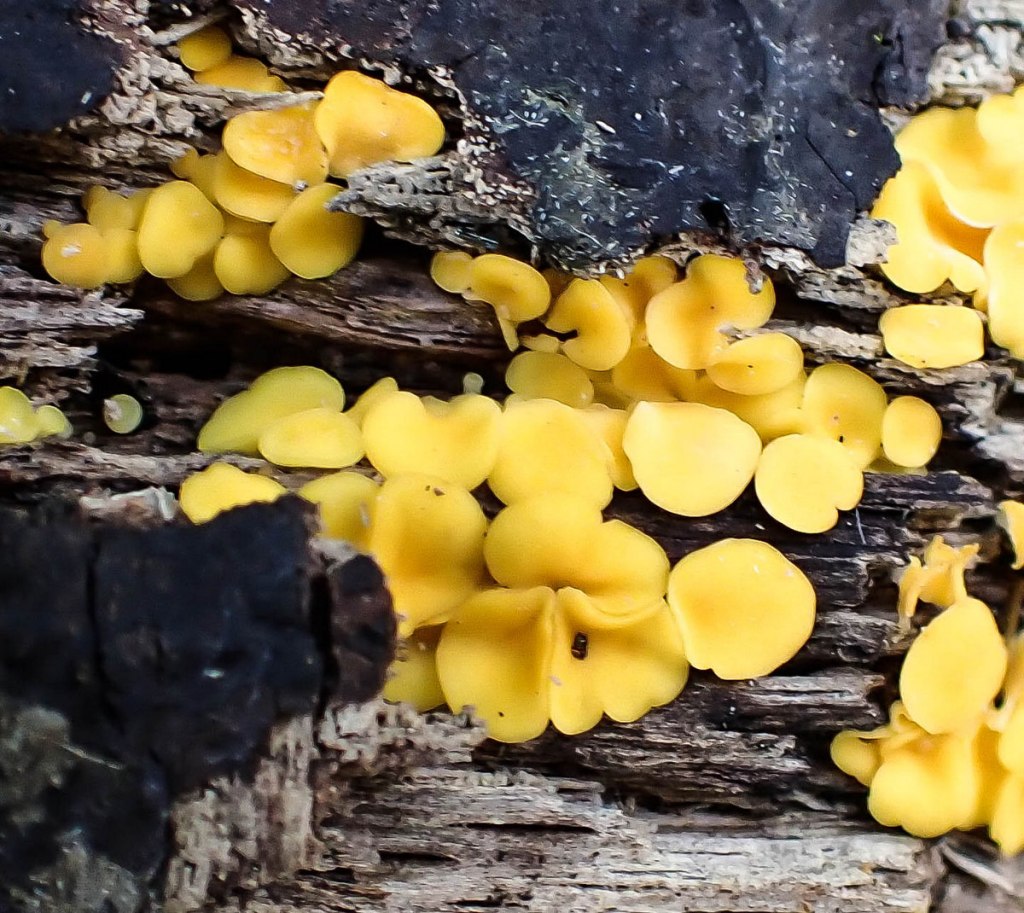
Bud break is a very special time on this blog and I try to show as much of it as I can each spring as trees wake up. These are horse chestnut leaves which had just opened out of a thumb size bud, and if you look closely you can see the grape like cluster of flower buds as well. I hope this post will show that while spring is certainly known for flowers, there are other things going on that are just as beautiful.

Bud break is defined as when the tip of a leaf can be seen protruding from the open bud scales, so this red maple bud is a little beyond that. It’s still quite beautiful though.

I could almost hear this red maple yawning as it stretched out its arms in the sunshine. How is it possible to not love life when there are things like this going on all around you?

Older established maples look more like this. Red maples are a very prolific tree. It is estimated that one tree 12 inches in diameter can produce a million seeds. That must mean that we have uncountable trillions of seeds falling each year in our forests. It’s no wonder we have so many red maples.

Other maples are waking up as well. Here a striped maple is in the process of opening its new leaves. As maples go these leaves are among the largest, and that is because it’s an understory tree with leaves that will never see the bright sunshine of the forest canopy, so it has had to adapt to lower light intensity. If you pay attention you’ll notice that plants that can survive in shade almost always have larger leaves.

On Norway maples the flowers appear just before the leaves. Since these flowers have many parts that are all one color they can be challenging to get a good photo of. I had to try several times.

And then of course there are the beech buds, which open to reveal new leaves that look like silvery angel wings. They are among the most beautiful things found in a New Hampshire Forest in the spring. In spring all the beauty, mystery and miracle of life can be found in a single bud, and I suppose that must be why I’ve watched them since I was a boy, and why I’ve always enjoyed this season more than any other. It’s so full of promise and possibilities.
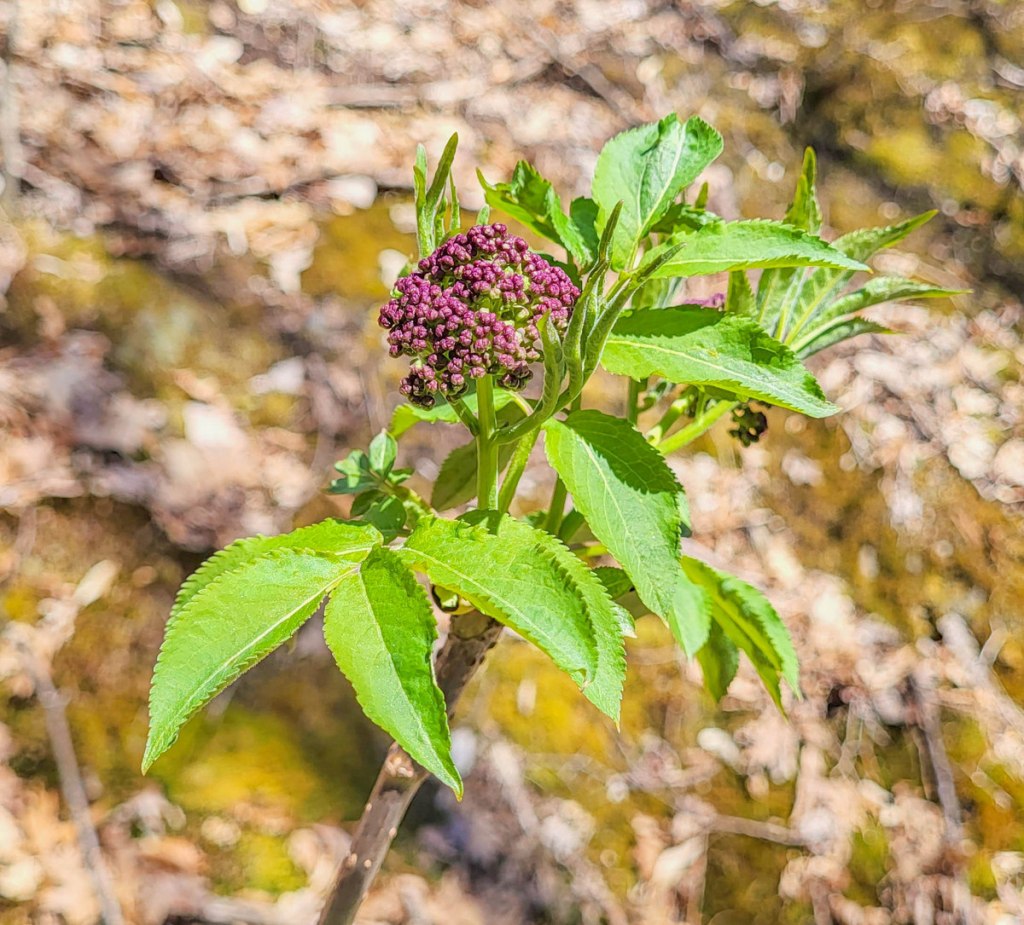
Red elderberry flower buds are nearly ready to open. The flowers will be white and the flower head will be the same shape seen here, not at all like the larger, flat flower heads of common elderberry. These berries will be bright red and the birds will eat them just as soon as they ripen. That’s why you never see photos of them here; I can never get to them before the birds do.
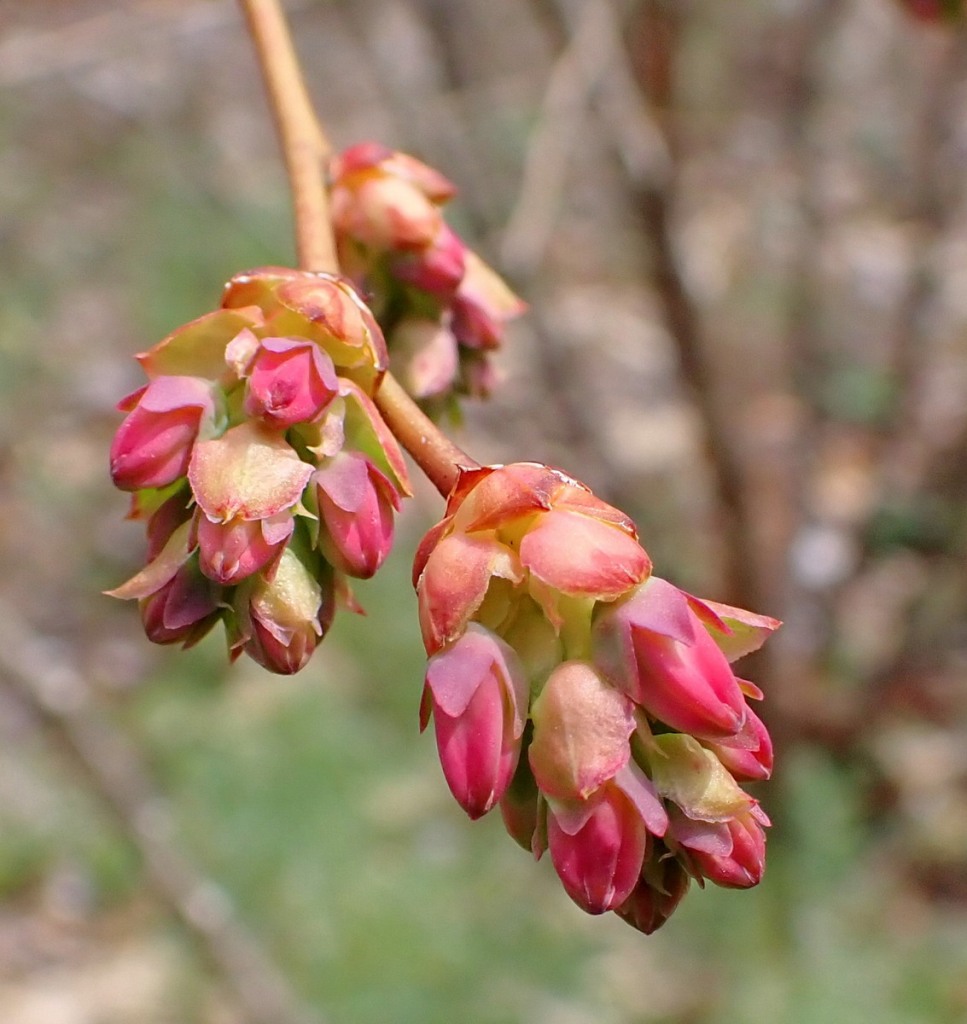
These rose colored blueberry buds will turn white as they open and become flowers. This is when they’re at their prettiest, in my opinion.

Leatherleaf is blooming. This early spring bloomer is in the heath family, as are blueberries, huckleberries, mountain laurel, and of course heaths and heathers. Leatherleaf flowers might look similar to blueberry blossoms at a glance but the growth habit of the two plants is very different. The shrub’s speckled evergreen leaves are very tough, and that’s where its common name comes from.

As with blueberries, the best place to find leatherleaf is along pond shorelines and sometimes along rivers and streams. It likes wet feet so it is one of the first plants to colonize bog mats. You’ll never see blueberry blossoms hanging all along the stem like these flowers do though, so once you know the plant’s habits it’s easy to spot from a distance. I’ve read that leatherleaf provides nesting cover for mallards and other waterfowl. Each flower, after pollination by a bumblebee, produces a single round capsule that will turn brown as it ripens. Birds are said to eat the fruit but there seems to be very little in print about that.

Right alongside leatherleaf and blueberry, you often find sweet gale. These are quarter inch long male sweet gale catkins, with their pretty triangular bud scales. I didn’t see any female plants but there were probably some nearby. Sweet gale is also called bog rosemary. Touching the foliage releases a sweet, pleasant scent from its resinous leaves which have been used for centuries as a natural insect repellent.
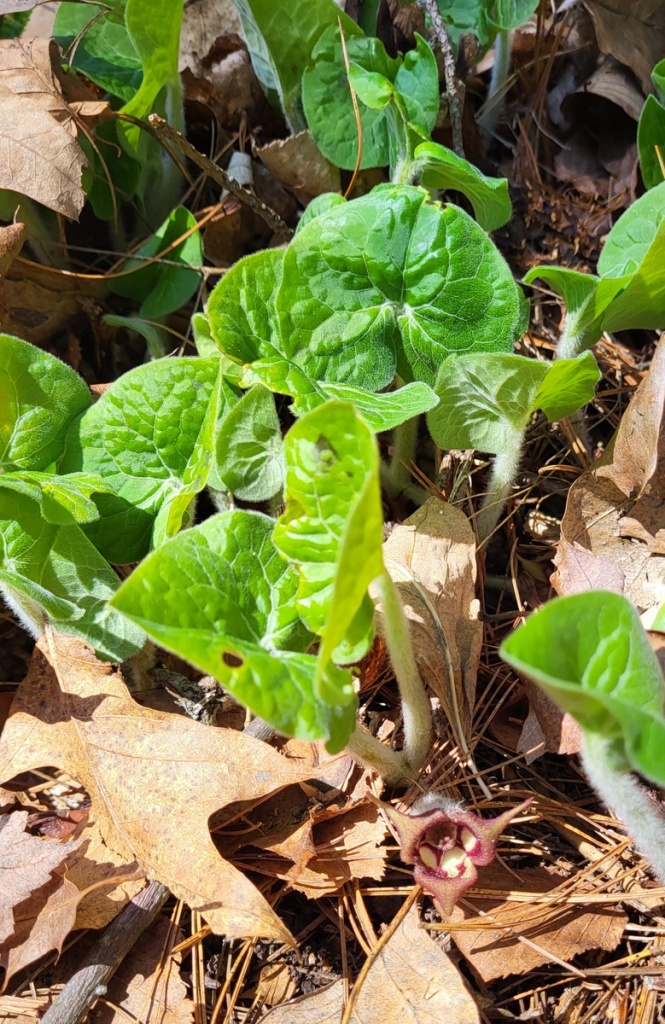
Wild ginger flowers have appeared. The plants flower quickly, almost as soon as the leaves appear, so you have to watch for them at this time of year. You can see this plant’s flower in the lower right at ground level. All parts of the plant including the heart shaped leaves are very hairy.

Wild ginger flowers have no petals; they are made up of 3 triangular calyx lobes that are fused into a cup and curl backwards. Reproductive parts are found in a central column inside. Wild ginger flowers are thought to self-pollinate and are said to produce 6 seeds per flower. I’d love to see the seeds but I can never remember to go back and look. Native Americans once used this plant for seasoning just as ginger is used today, but wild ginger has been found to contain certain toxins like aristolochic acid which can cause liver damage, so it shouldn’t be eaten.

This is what bud break looks like on a wild ginger flower bud. This will open to be like the flower seen in the previous photo. The buds are about the size of a blueberry and perfectly round. I found this small colony of plants on a sunny patch of ground in what used to be a homestead, but which has been abandoned for many years. It’s the only place I’ve ever seen them.

Dwarf ginseng takes the prize for the rarest plant in this post. These plants are quite small and easy to miss when they aren’t blooming. The plant at the top could easily fit in a teacup. Individual dwarf ginseng flowers are about 1/8″ across and have 5 white petals, a short white calyx, and 5 white stamens. The entire flowerhead is usually about 3/4″ across. If pollinated the flowers are followed by tiny yellow fruits. This is not the ginseng used in herbal medicine so it should never be picked.
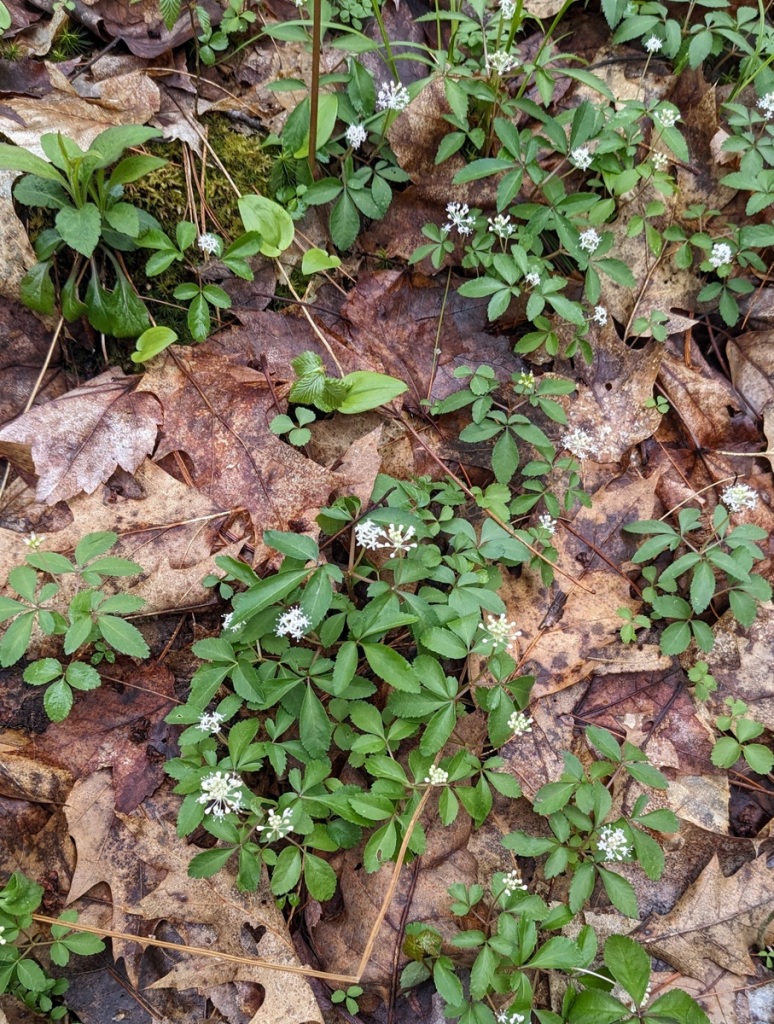
Years ago I found a spot that had 5 or 6 dwarf ginseng plants. Now the colony seen above has grown from those plants. Hopefully one day the plants will cover the forest floor in this spot.

I happened upon a painted turtle convention. There were just as many as what we see here off to the right; so many they wouldn’t all fit into this view, all soaking up the sun. I think this was the most turtles I’d ever seen in one place. Any time now the much bigger snapping turtles should appear.
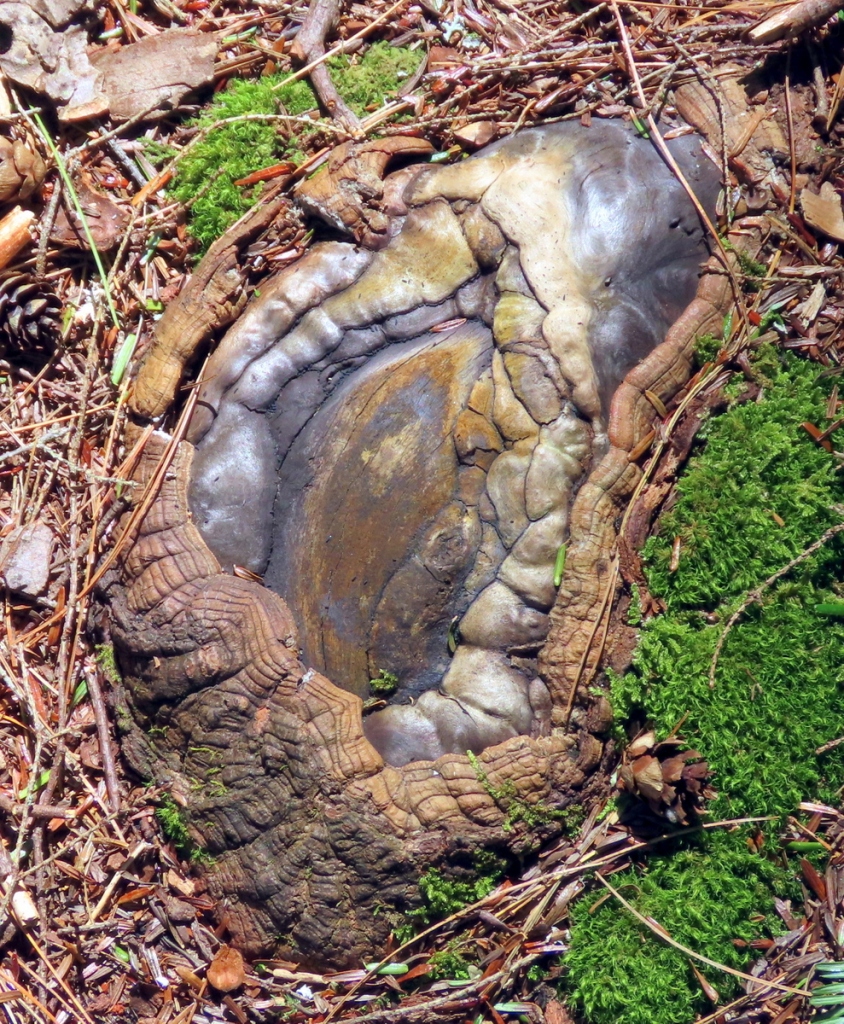
The above photo is of a hemlock root. That’s all; just an old tree root, but that’s not all of the story. It was in the middle of a trail and it had been worn down by countless feet stepping on it over who knows how many years. The traffic first wore off the bark and then slowly made its way down through the layers of root until it reached the heartwood. You can count the rings in the bark that show how many times it tried unsuccessfully to heal itself. That describes the mechanics of it but it’s hard to describe its beauty. It wasn’t purposely made; it all happened by accident, but it looks like it has been carved and sanded, and then colored with wood stain. In my opinion it’s worthy of having a place in an art gallery as a piece of sculpture. Beauty is where you find it, and you find it everywhere.

There was a time when friends and I used to fish from this spot just below the Ashuelot River dam on West Street in Keene but now I’m more interested in watching the foam patterns on the river than in catching fish. I’ll say it again: Beauty is where you find it, and you find it everywhere.
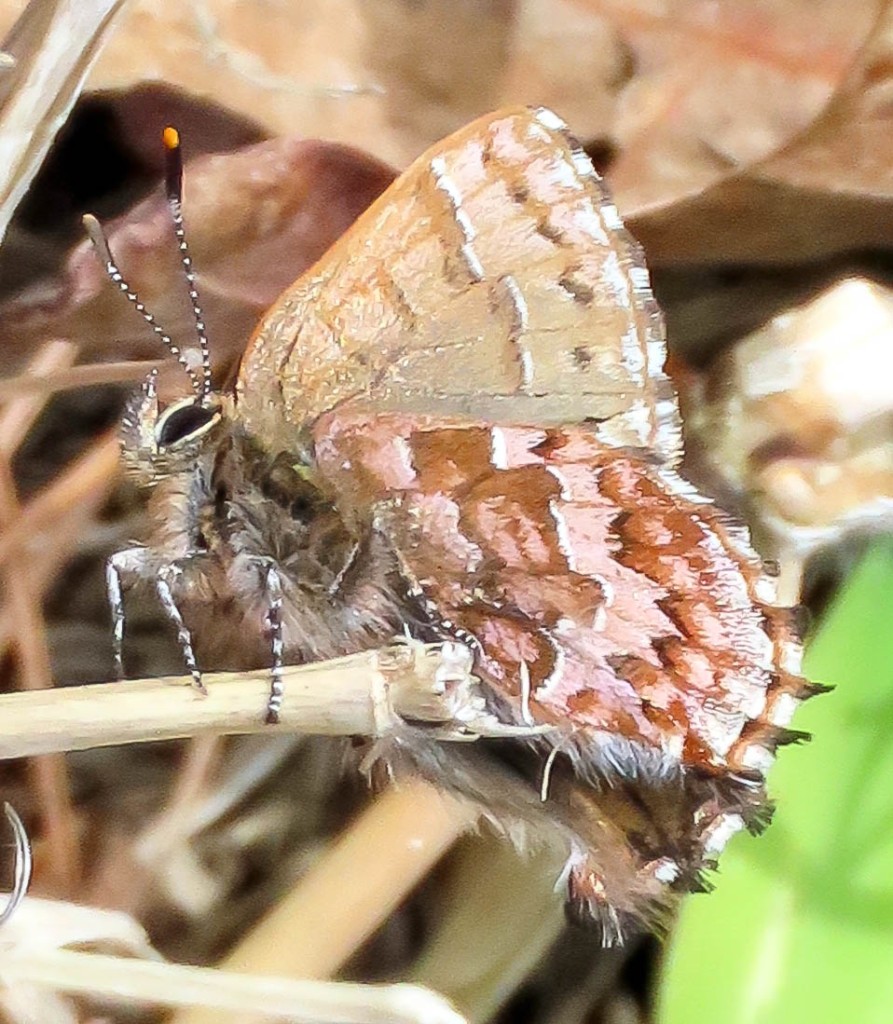
Google lens tells me this is an eastern pine elfin butterfly so since I don’t know a lot about insects I have to go with that. I do know that it was quite small and fidgety, so I had to take this shot quickly from a yard or so away before I scared it away. That’s why it’s not a very good shot, but I like those eyes so I’m showing it to you. I also liked how furry it was. I’ve read that this butterfly is about the size of your thumbnail and blends into its surroundings so well it isn’t often seen. The caterpillars feed on the needles of the eastern white pine and the butterflies sip the nectar from blueberry blossoms. Pine elfins are said to like to bask in the sunlight on chilly spring days, just as this one was doing.

Sensitive fern fiddleheads have a papery covering over them when they first come out of the soil. Other ferns like the ostrich fern also have this covering. Sensitive ferns also have the same shade of green and a groove in the stem like ostrich ferns but sensitive ferns are not edible and ostrich ferns are, so foragers should know them both well. Sensitive ferns contain toxins that have caused liver and brain damage in horses. That’s probably why deer don’t eat them.

Here is a sensitive fern unfolding from the fiddlehead. Sensitive ferns get their name from their sensitivity to frost, so one cold morning now could wipe out any that aren’t protected by overhead trees. This is one of those ferns that is so common nobody seems to see it.

I think it was two weeks ago that I said I thought coltsfoot flowers wouldn’t last much longer, but nature had other ideas and cool weather kept them going for nearly a month. Coltsfoot gives signals though and one signal is the appearance of leaves. When you see leaves it’s a fair bet that the flowers are on their way out.

Seed heads reinforce the thought that coltsfoot is done for the year. These seed heads are very different than those of dandelion, even though at a passing glance they might look the same.

It’s time for grasses to start flowering and I know that because sweet vernal grass is flowering. It’s one of the earliest grasses to flower in this area. In this photo you can see its deep purple male flowers and its wispy white female flowers. It is also called vanilla grass because it is said to be scented by the same substance that gives sweet woodruff its vanilla like fragrance. This is not the same sweet grass that Native Americans used for making baskets. This grass is short, only growing to about shin high, and forms small clumps with dark, easily seen flower heads as can be seen here. Its flowers are pretty and they’re another sign that spring is really here.
I meant to do my work today, but a brown bird sang in the apple tree, and a butterfly flitted across the field, and all the leaves were calling. ~Richard le Gallienne
Thanks for coming by.
